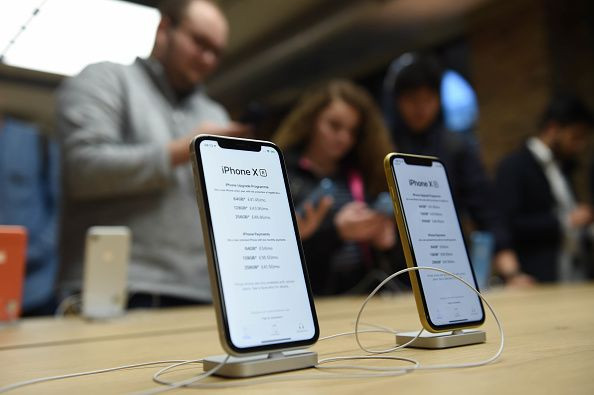Here's How Much Apple's Battery-Replacement Program Hurt Sales

When Apple (NASDAQ:AAPL) warned earlier this month that its revenue in the December quarter was going to fall far short of its previous expectations, the company cited numerous reasons, including foreign exchange headwinds, slowing growth in key emerging markets like China, and launch timing differences that would create tough year-over-year comparisons. However, there was one factor that CEO Tim Cook cited that caught investors off guard: Apple's battery replacement program.
That contributed to sluggish upgrade activity in developed markets, and the overall impact was greater than you think.
Background on the program
As a refresher, Apple was facing widespread backlash in late 2017 after the company confirmed that it was effectively throttling performance in older iPhones. The company had a justifiable technical reason for doing so: in order to preserve battery life. All lithium-ion batteries degrade over time and lose capacity, and there is an inherent trade-off between performance and battery life. Still, Apple couldn't shake the perception among disgruntled customers that it was throttling performance to encourage them to buy new iPhones.
In response, the company introduced a battery replacement program that slashed the replacement cost to a mere $29 (a discount of $50). It was in effect throughout 2018. The Mac maker also added an option in iOS in early 2018 that allowed users to turn off throttling, letting customers make the decision around said trade-off instead of making it for them.
Hurting upgrade activity further, last fall saw the release of iOS 12, which included significant performance improvements for older devices. Between the software updates and cheap hardware replacements, Apple dramatically extended the useful life of many of the older devices within its installed base. That's a huge win for customers, but Apple inevitably sacrificed some sales in the process.
Apple probably lost as much as $7.2 billion in sales
Daring Fireball reports that in a recent all-hands meeting, Cook told employees that Apple replaced 11 million batteries under the program, compared to the 1 million to 2 million iPhone batteries it typically replaces under normal conditions. That means there were likely 9 million to 10 million prospective iPhone upgraders that simply chose to get new batteries instead of new iPhones.
Through the first three quarters of 2018, the average selling price (ASP) for an iPhone was $749. (Apple will no longer provide unit sales or ASP data going forward.) After charging $29 for the new battery, the relative loss would be about $720 per lost unit sale. That suggests Apple potentially missed out on $6.5 billion to $7.2 billion in revenue from those potential upgraders. To be clear, that's not a game-changing sum for Apple -- just 3% of the $261 billion in revenue that it actually generated in 2018 -- but it does represent an incremental headwind on top of other challenges the company is currently facing.
It's also worth noting that the revenue lost to battery replacements would have been spread out throughout the entire year, not just the December quarter. That's why it's still perplexing that Cook and Co. seemed so surprised by Apple's shortfall. The company issued its original guidance on Nov. 1 -- just days after the iPhone XR launched -- before dropping the bad news on Jan. 2. It seems that Apple still had high expectations for upgrades to the iPhone XR, which were quashed by all those batteries it replaced throughout 2018.
This article originally appeared in the Motley Fool.
Evan Niu, CFA owns shares of Apple. The Motley Fool owns shares of and recommends Apple. The Motley Fool has the following options: long January 2020 $150 calls on Apple and short January 2020 $155 calls on Apple. The Motley Fool has a disclosure policy.





















